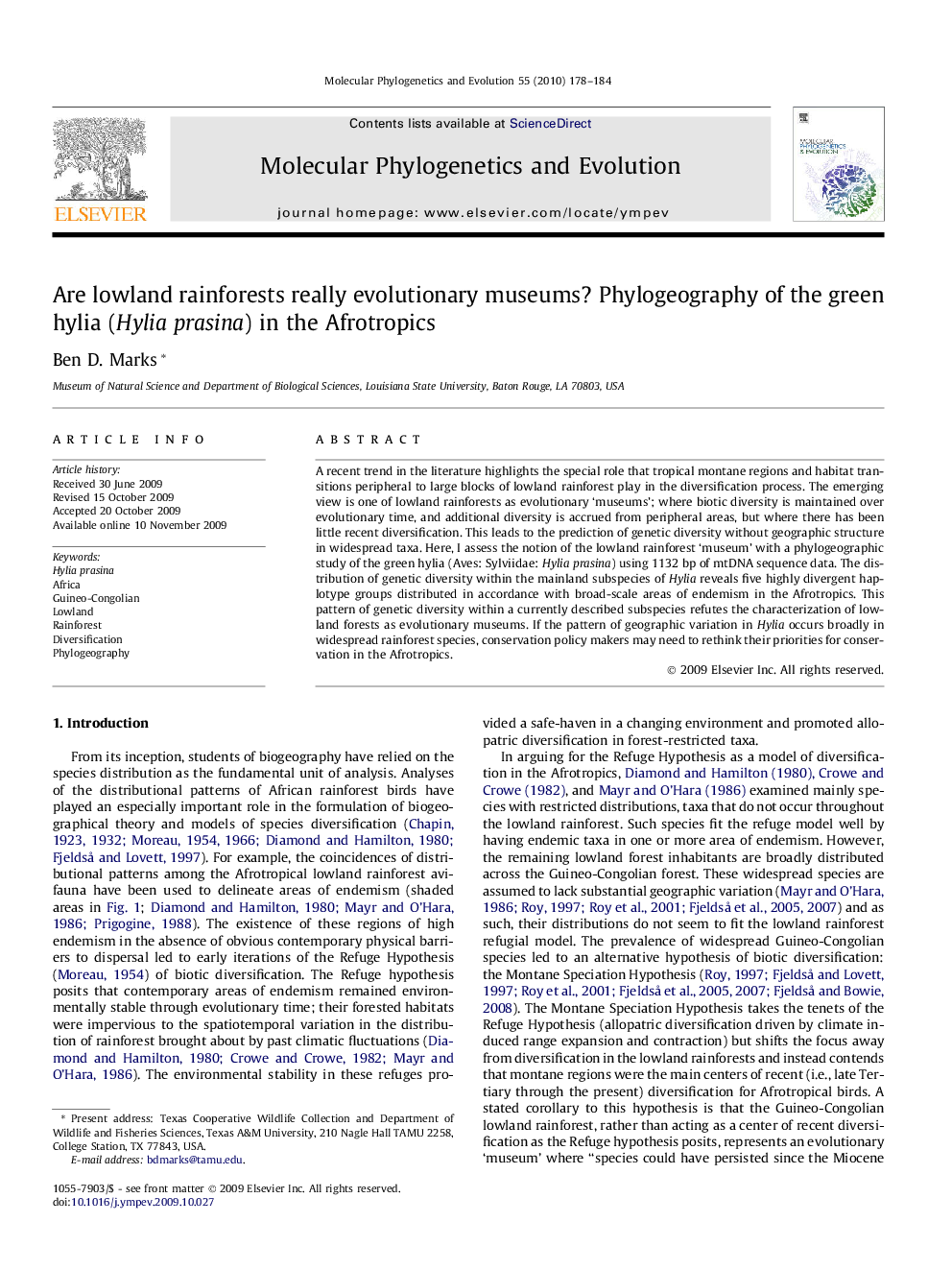| Article ID | Journal | Published Year | Pages | File Type |
|---|---|---|---|---|
| 2834840 | Molecular Phylogenetics and Evolution | 2010 | 7 Pages |
A recent trend in the literature highlights the special role that tropical montane regions and habitat transitions peripheral to large blocks of lowland rainforest play in the diversification process. The emerging view is one of lowland rainforests as evolutionary ‘museums’; where biotic diversity is maintained over evolutionary time, and additional diversity is accrued from peripheral areas, but where there has been little recent diversification. This leads to the prediction of genetic diversity without geographic structure in widespread taxa. Here, I assess the notion of the lowland rainforest ‘museum’ with a phylogeographic study of the green hylia (Aves: Sylviidae: Hylia prasina) using 1132 bp of mtDNA sequence data. The distribution of genetic diversity within the mainland subspecies of Hylia reveals five highly divergent haplotype groups distributed in accordance with broad-scale areas of endemism in the Afrotropics. This pattern of genetic diversity within a currently described subspecies refutes the characterization of lowland forests as evolutionary museums. If the pattern of geographic variation in Hylia occurs broadly in widespread rainforest species, conservation policy makers may need to rethink their priorities for conservation in the Afrotropics.
